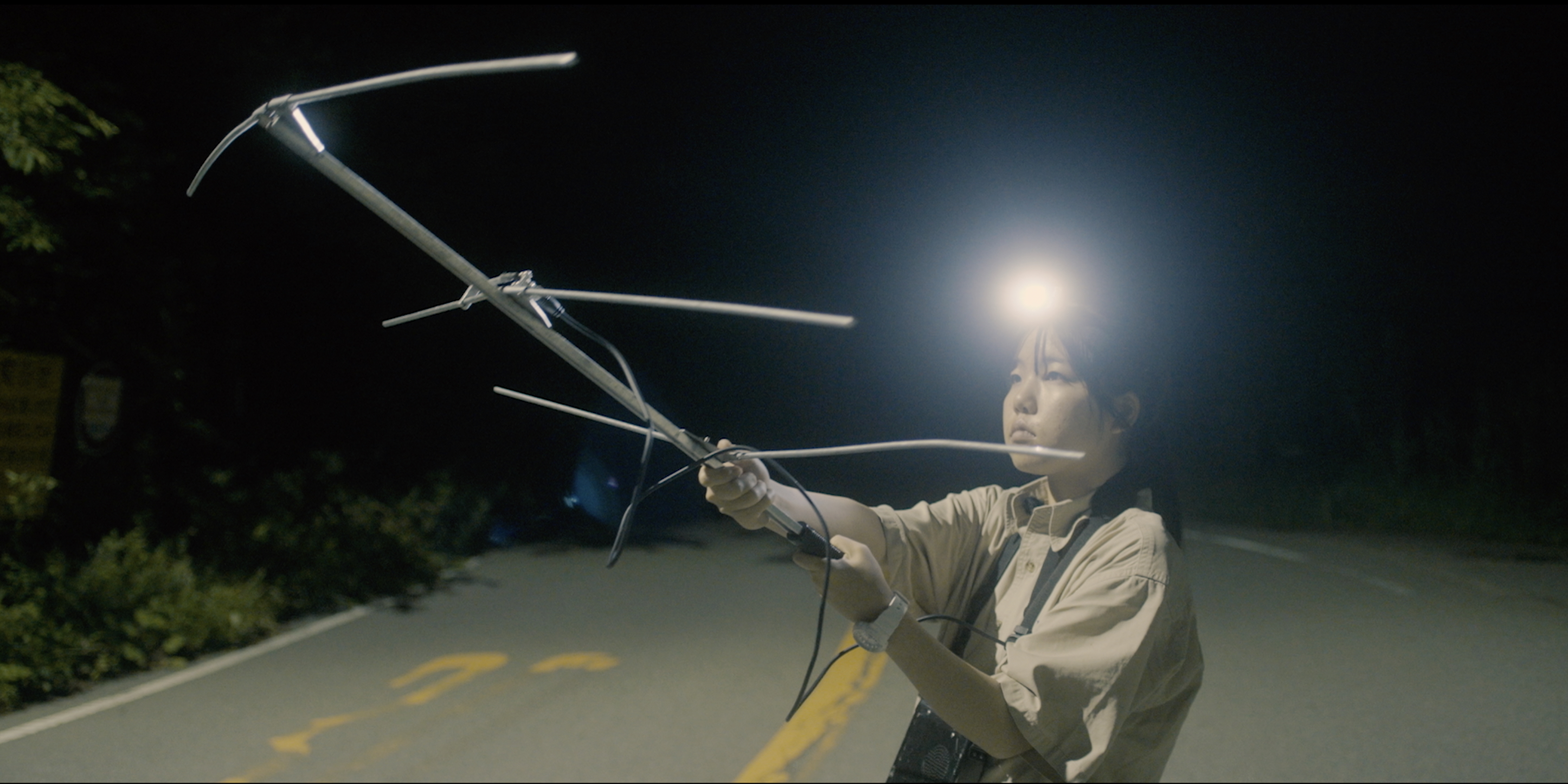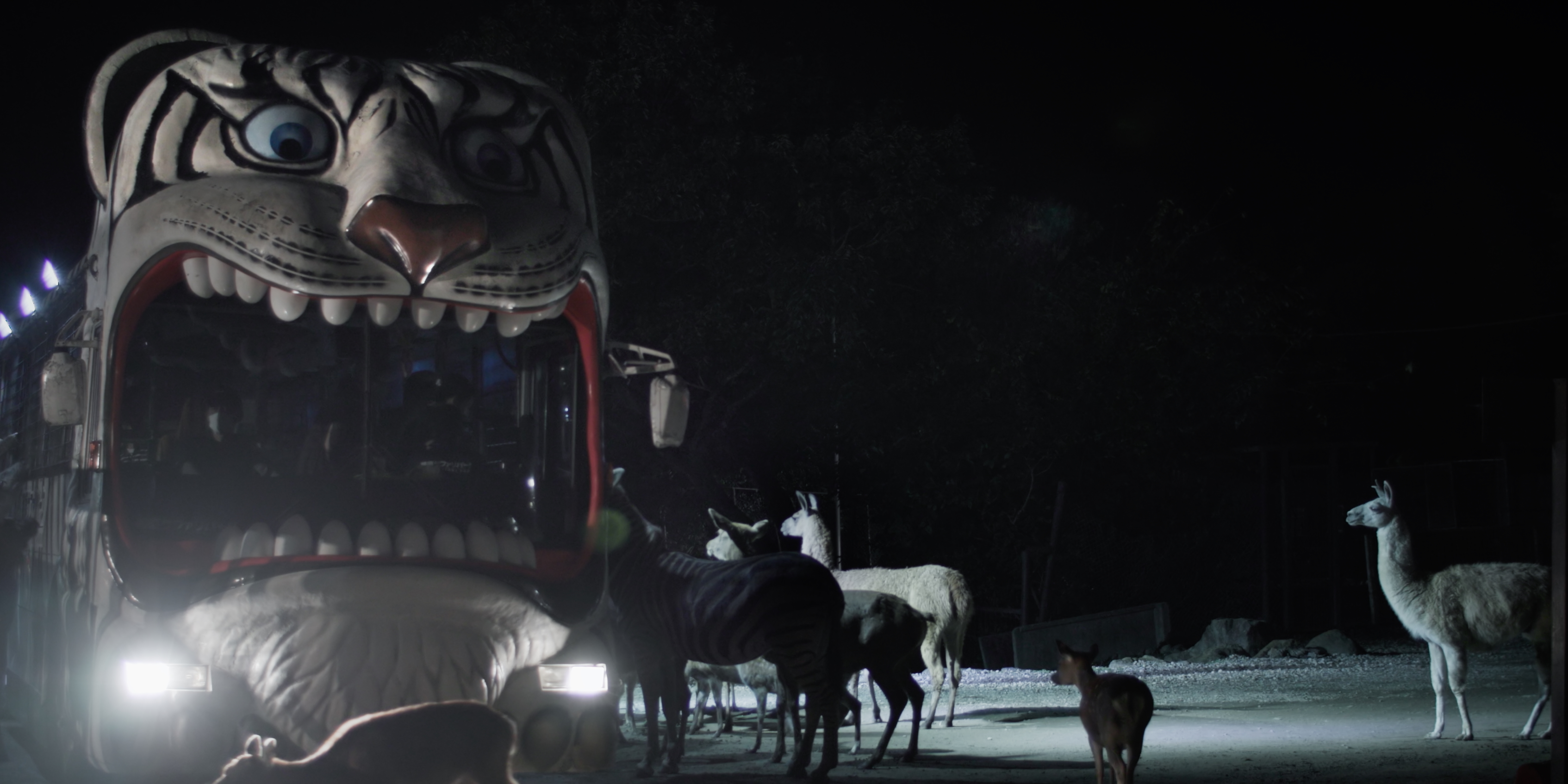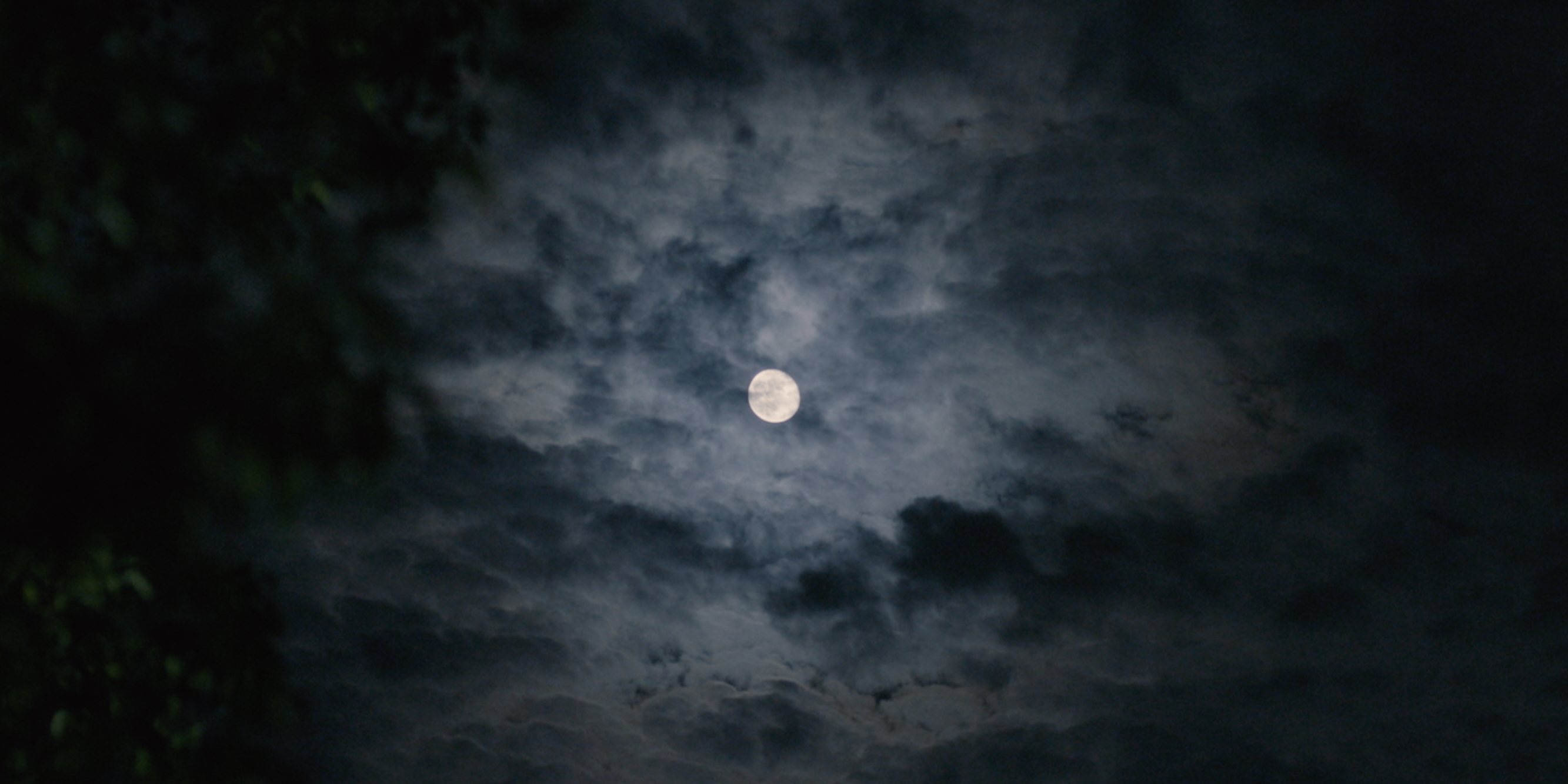


WOLF MOON
feature-length creative documentary in development
director Robin Petré
editor Charlotte Munch Bengtsen
producer Monica Hellström / Ström Pictures
Pitched at CPH:FORUM 2025
As wildlife around the world turns increasingly nocturnal in an effort to evade humans, we are entering a new form of coexistence where humans dominate the day while animals are hiding in the dark. WOLF MOON takes us deep into the night in its exploration of human-animal relations and the shifting power balance between human and animal.
WOLF MOON interweaves four loosely connecting storylines: In Japan, a group of night patrollers are searching the city streets for bears, trying to chase them out of town again before morning. In Sweden, tourists armed with torches are hunting for wolves and moose on a guided night safari going through the dark forests. In South Africa, an expert on the Ecology of Fear records fear responses in wildlife, exploring how wild animals fear human voices more than any other sound in the world. The film’s fourth layer involves a group of actors exploring how to implement the characteristics of bears and wolves during rehearsals, and in the process coming face to face with the animals they are studying. This part of the film is inspired by Djuna Barnes' Nightwood, a novel continuously blurring the lines between human and animal. There’s a staged, theatrical element transcending the entire film — as humans, we depend on torches to see in the dark, constructing delimited, artificial pockets of light within each nightly frame in the film.
In the shadow of global mass extinction and ecosystem collapse, WOLF MOON reflects on the importance of the very existence of animals for human thought and imagination – and our understanding of what it means to be human in an abundant living world.
WOLF MOON interweaves four loosely connecting storylines: In Japan, a group of night patrollers are searching the city streets for bears, trying to chase them out of town again before morning. In Sweden, tourists armed with torches are hunting for wolves and moose on a guided night safari going through the dark forests. In South Africa, an expert on the Ecology of Fear records fear responses in wildlife, exploring how wild animals fear human voices more than any other sound in the world. The film’s fourth layer involves a group of actors exploring how to implement the characteristics of bears and wolves during rehearsals, and in the process coming face to face with the animals they are studying. This part of the film is inspired by Djuna Barnes' Nightwood, a novel continuously blurring the lines between human and animal. There’s a staged, theatrical element transcending the entire film — as humans, we depend on torches to see in the dark, constructing delimited, artificial pockets of light within each nightly frame in the film.
In the shadow of global mass extinction and ecosystem collapse, WOLF MOON reflects on the importance of the very existence of animals for human thought and imagination – and our understanding of what it means to be human in an abundant living world.